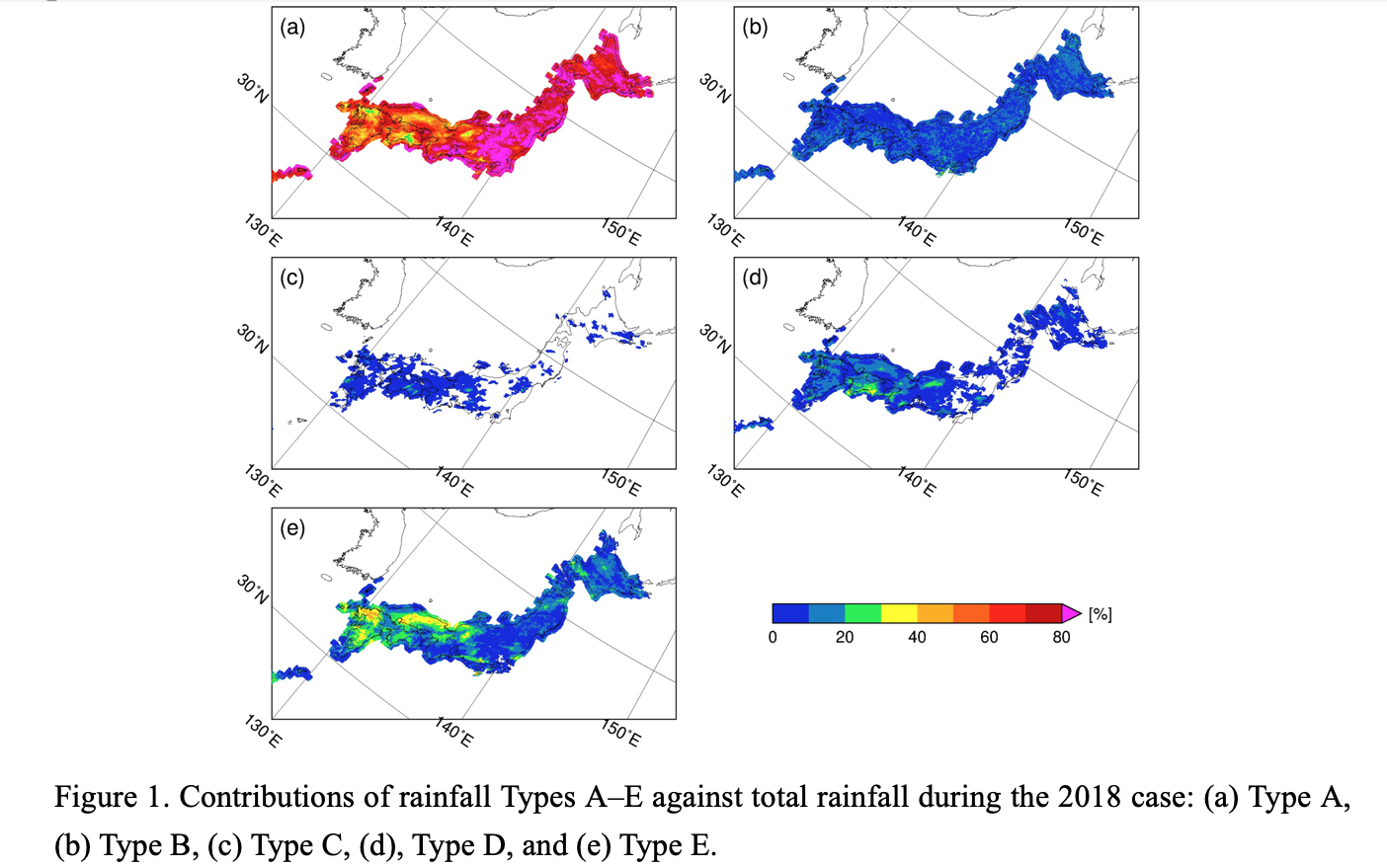Graphical Abstract
Unuma, T., and T. Takemi, 2021: Rainfall characteristics and their environmental conditions during the heavy rainfall events over Japan in July of 2017 and 2018. J. Meteor. Soc. Japan, 99, 165-180.
Special Edition on Extreme Rainfall Events in 2017 and 2018
https://doi.org/10.2151/jmsj.2021-009
Graphical Abstract
Published
Plain Language Summary: Precipitating cloud systems during the heavy rainfall events in July of 2017 and 2018 were categorized into five types, based on the intensity, area, and lifetime of rainfall. Organized convective systems having larger rainfall areas and longer lifetimes play a major role in generating the heavy rainfalls. Column moisture content and tropospheric relative humidity characterize the environmental conditions for the occurrence of the present heavy rainfall events.
Highlights:
- This study examined rainfall contributions from five-type precipitating cloud systems, one with weaker rainfall (less than 10 mm h−1) (Type A) and four with stronger rainfall (greater than or equal to 10 mm h−1), i.e., short-live convective clusters (SLCC) (Type B), quasi-stationary convective clusters (QSCCs) (Type C), propagating convective clusters (PCCs) (Type D), and other convective but unorganized rainfall (Type E).
- The contribution from stronger rains due to organized systems with areas of 200 km2 plays a major role in regions with significant amounts of rainfall during the heavy rainfall events.
- The column moisture content and the middle-to-upper-level relative humidity characterize the environmental conditions for the occurrence of the heavy rainfall events in July of 2017 and 2018.







